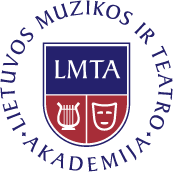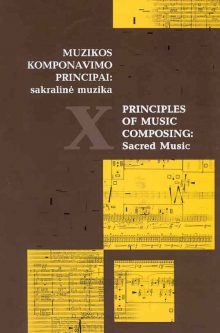Šį leidinį sudaro moksliniai straipsniai, pristatyti ir perskaityti dešimtojoje (jubiliejinėje) tarptautinėje muzikos teorijos konferencijoje „Muzikos komponavimo principai: sakralinė muzika“, vykusioje 2010 m. spalio
20–22 d. Vilniuje.
Konferencijos rengėjai – Lietuvos muzikos ir teatro akademija ir Lietuvos kompozitorių sąjunga.
Per dvi dešimtis straipsnių pristatė muzikologai, kompozitoriai, teologai iš įvairiausių kraštų (Austrija, Graikija, Italija, Lenkija, Ukraina, Jungtinė Karalystė, Rumunija, Rusija, Portugalija, Latvija ir Lietuva), reprezentuojantys per tuziną aukštųjų mokslo ir muzikos institucijų, universitetų, akademijų ir konservatorijų.
Straipsniai
- Pratarmė
- Foreword
- 1 Sakralinės muzikos kaip komponavimo objekto sąvoka / The Conception of Sacred Music as a Composing Object
-
Vilius Sikorskas.
The Influence of the Musical Tradition of the Roman Catholic Church on the Expression of Christian Faith -
Milda Paulikaitė.
Sound in the Service of the Sacred: Mystagogical Aspect of Gregorian Chant -
Danutė Kalavinskaitė.
Litany as a Genre of Piety -
Manfred Novak.
The Second Vatican Council and the Contemporary Composer: Continuously Conflicting Concepts or Ways towards Reconciliation? - 2 Muzikos komponavimo sakralumo ir pasaulietiškumo ženklai / The Signs of Sacrality and Secularity in Music Composing
-
Alfonsas Motuzas.
The Origin of the Hill of Crosses, Devotional Practises and Music of the Pilgrimages -
Yelena Zinkevych.
Aspect of Liturgical Tradition in the Modern Genre-creative Process in Ukraine -
Ewa Kowalska-Zając.
From Penderecki to Mykietyn. About the New Polish Passion Music -
Olga Osadchaya.
Sacral Space in Requiem by Igor Vorobyov -
Nicola Davico.
The Passion: a Srossroad between Paths -
Kalliopi Stiga.
“Greek Modern Poetry and Religiousness” in the Work of Mikis Theodorakis -
Violeta Tumasonienė.
The Expression of Word and Music in Pieces of Lithuanian Modern Music Based on Psalm Texts -
Rimantas Janeliauskas.
M. K. Čiurlionis’ Unrecognized Cycle of Preludes. Sacred and Structural Signs -
Dominic Wells.
Singing the Same Song: Bridging the Sacred/Secular Boundary in the Mass Settings of James MacMilla -
Igor Vorobyov.
The “New Religious” Mission of Totalitarian Art in the Example of Compositions by Soviet Composers from the 1930–1950’s in the Genres of Cantata and Oratorio -
Margarita Katunyan.
Guido’s Exercises and Dances by Vladimir Martynov: Opera after Cantus Gregorianus - 3 Sakralinės muzikos komponavimo ypatybės / The Peculiarities of Sacred Music Composing
-
Guntars Pranis.
Gregorian Chant: Local Traditions, their Meaning for Music Performance Today and New Approaches in Research -
Mariusz Białkowski.
Melody’s Aspect of Gregorian Compositions -
Luigi Verdi.
Wolfgang Amadeus Mozart’s Antiphony Quaerite primum regnum: Admittance Examination as a Member of the Philharmonic Academy in Bologna (1770) -
Achilleas Chaldaiakis.
“All master composers of Greek ecclesiastic music”: An Initial Step on a New History of Greek Sacral Music -
Demetrios Balageorgos.
Tradition and Evolution of the Sticheraric Melopoeia: the Example of the Sticheron «Ἀναστάσεως ἡμέρα» -
Gregorios Anastasiou.
The Musical ‘Language’ of the Psaltic Art -
Bianca Ţiplea Temeş.
Byzantine Music Revisited: from Vocal Monody to Electronic Music in the Works of Romanian Composers of the 20th Century. Musical and Iconographical Decoding - 4 Sakralinė muzika liturgijoje ir už jos ribų / Sacred Music in Liturgy and Beyond
-
Bogumila Mika.
Marian Repertoire in the Polish Art Music of the 20th Century. From Inspiration to Principal Composing -
Marta Szoka.
The Concept of Organ Repertoire as Sacral Music -
Evangelia Kopsalidou.
French Religious Music at the Court of Louis XIV (1643–1715): Motet, Mass, Oratorio -
Ivan Moody.
Arvo Pärt: Aspects of Spirituality, Music and Text in the 21st Century - Apie autorius / About the Authors

